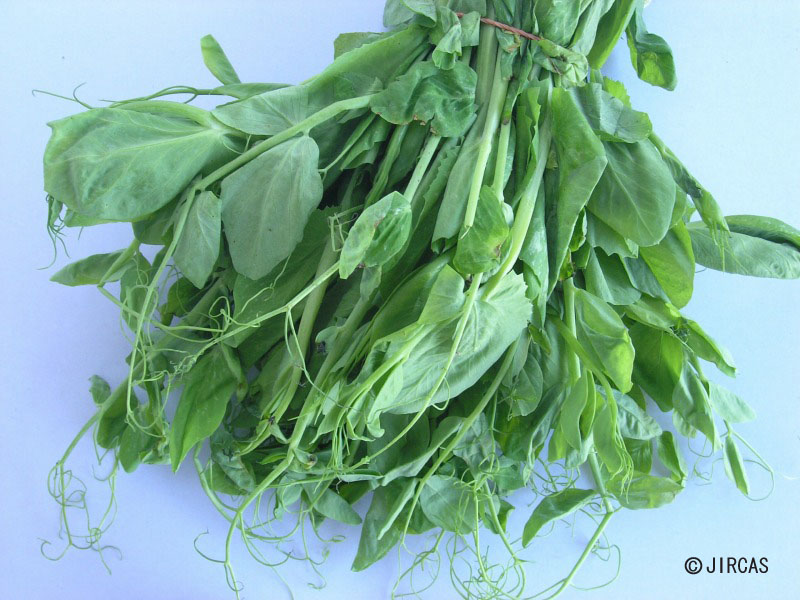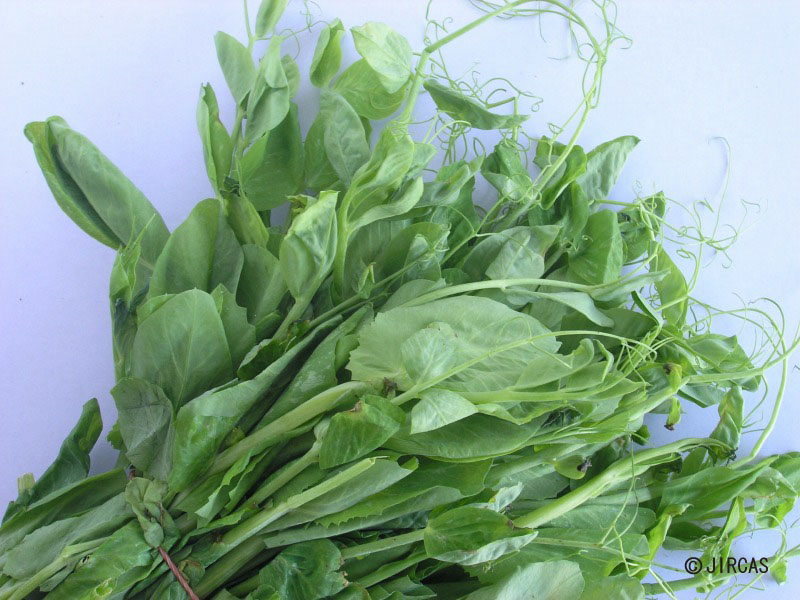Pisum sativum L. (Fabaceae)
- Scientific name
- Pisum sativum L.
- Family name
- Fabaceae (Syn. Leguminosae)
- Common name
- Garden pea, sugar pea (English); endo (Japanese)
- Local name
- Thua lan tao
Herb, spreading or climbing via well-developed tendrils; roots white. Leaves paripinnate; leaflets in 1–3 pairs, stipules large. Flowers showy, purple, pink, or white, solitary or few and racemose on elongated, axillary peduncles. Calyx obliquely campanulate. Corolla 5, wings falcate-oblong, adnate to keel; keel obtuse, incurved, shorter than wings. Stamens diadelphous, vexillary stamen free or connate at the middle with others; filaments dilated above; anthers uniform. Ovary subsessile, many; style bent abruptly upward, dilated at apex, bearded above; stigma subterminal. Pod compressed to cylindrical, inflated, oblong-linear, obliquely acute, 2-valved. Seeds: subglobose.
Commonly grown as a vegetable during the cool season. Propagated by seed sowing.
Young shoots are blanched and eaten with nam phrik (dipping sauces) or add to various curry dishes. Young fruits are fried with cooking oil and oyster sauce.
Young shoots are blanched and eaten with nam phrik (dipping sauces) or add to various curry dishes. Young fruits are fried with cooking oil and oyster sauce.





